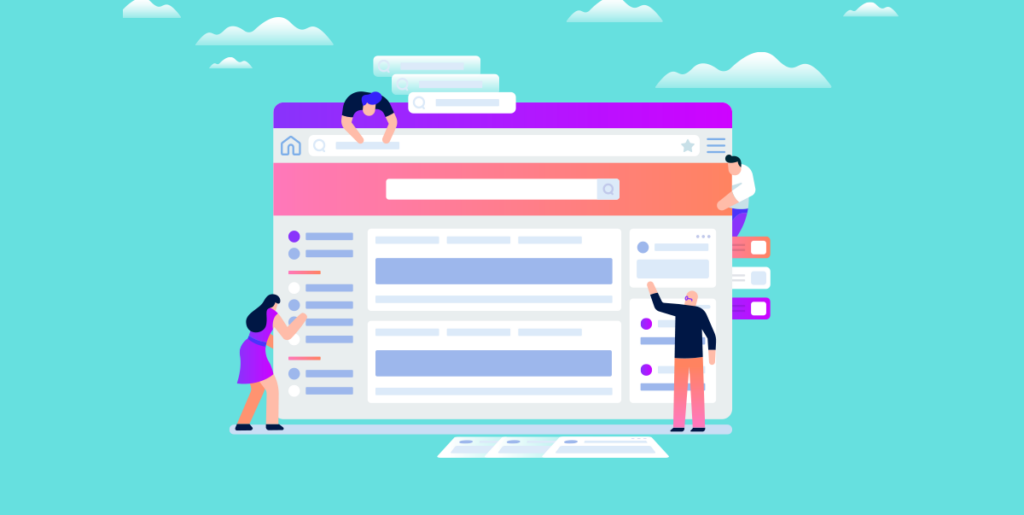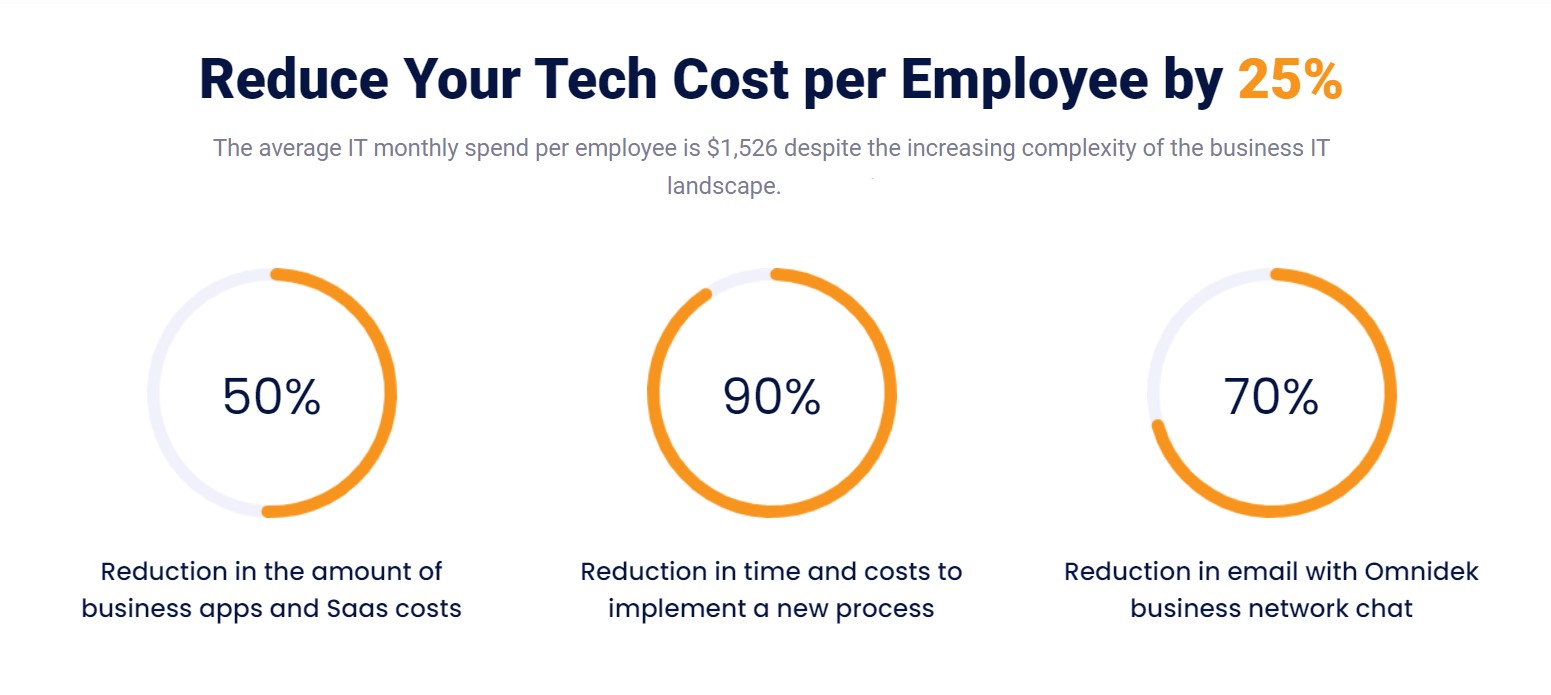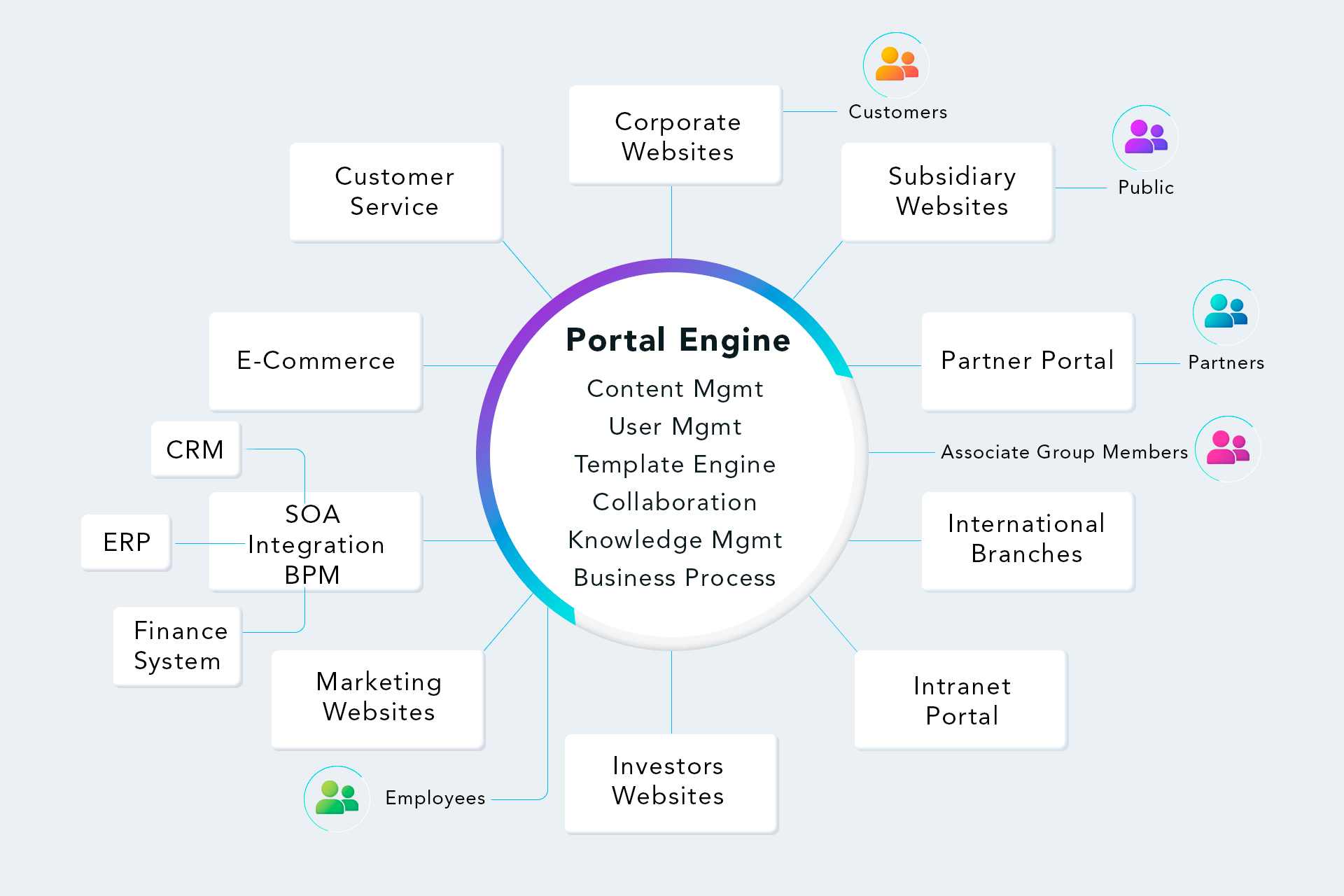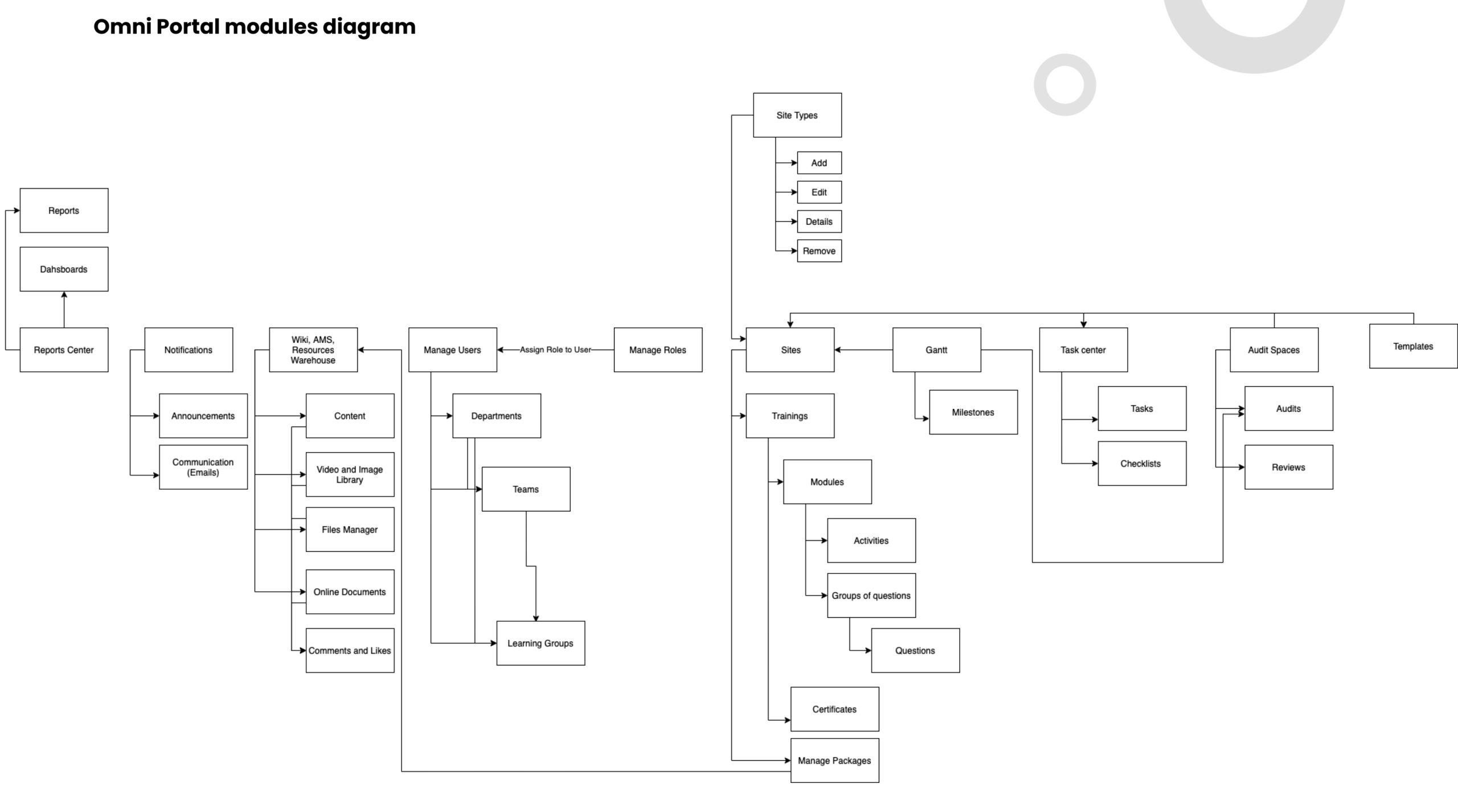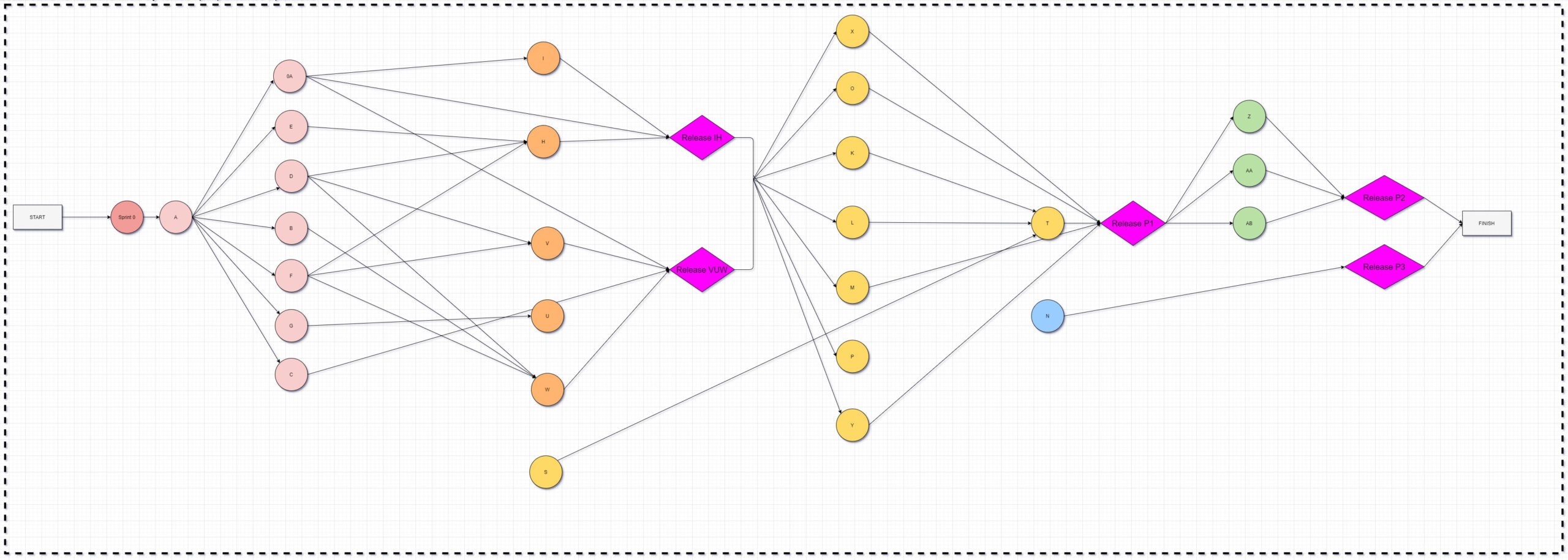Table of Contents
The larger the company becomes, the more it uses digital tools. And although the tools are designed to optimize work at large companies, at the same time, their abundance can complicate the workflow and communication between departments. Sometimes, it can take half a day to collect the necessary data. It is because your company’s development team has a different set of tools than salespeople or colleagues in the marketing department. Thus, chaos can intensify when we talk about increased collaboration between teams, departments, and organizations, where everything is interconnected.
In this case, it is easy to lose visibility when information spreads everywhere, and people use many specialized tools. Securing confidential information and storage is another level of complexity of the problem.
The need arises for an internal hub for the projects that put all tools and resources in one place and create an intelligent self-learning search within this hub that will help employees search for data as efficiently as possible. This decision will undoubtedly make your life a little easier. You can find everything you need in just two clicks, and you do not need to remember your credentials for each system – you need to open a single internal web-based portal. Let’s take a little look at the concept of an internal portal or an enterprise portal.
Internal portal defined – functions, tasks and performance metrics
The internal portal differs from a company internal website and presents a centralized database or a point to which corporate applications are connected. It comprises all the data, reflecting the internal business processes. Integration of an advanced internal portal provides the user with a single point of access to the company’s information infrastructure, creating a dynamic and productive environment. In most of the cases, it has an integrated task tracker, ERP system, document management system, CRM, etc. Therefore, it is important that the platform can interact with third-party applications through the API.
Three pillars of the internal portal present reliability, accessibility and security. Main tasks of the omni employee portal :
- Improve the management and business efficiency (workload evaluation and task generating).
- Take control over the internal business processes.
- Optimize the working hours.
- Automate main business processes.
- Improve the performance of your employees.
To understand how well a portal is performing, you need to track user actions. Each function has its own metrics. For measuring these metrics and efficiency, one should leverage the ML and AI analytical tools.
Building your advanced tech portal provides many benefits, such as:
- The speed of information search will increase due to the fact that it will be accumulated on one resource.
- The risk of confidential information leakage will be reduced.
- The adaptation of new employees will accelerate.
- Employees will have the opportunity to simultaneously and jointly work on documents, which will reduce the duration of approvals.
- The corporate culture will strengthen – due to the growth of horizontal ties in the team.
- The results of the work will become more transparent for the entire team through general discussions.
- You can gain experience and improve work processes.
- Typical tasks can be solved using the accumulated knowledge base.
- Internal correspondence, employment, and the presence of employees will be under control.
- The quality and speed of feedback from employees will increase.
- The quality of customer service and your other business operations will increase.
Altamira offers exceptional omni internal portal development capabilities that endure high business efficiency. More than 10 years of development experience allow us to build world-class solutions enabling businesses to fill in all the cooperation gaps and succeed on the market. Unique development approach, rich technology stack, shared values and client-centered culture allow us to satisfy the needs of the most demanding customer.
Unified technology center
Today, enterprise employees are faced with a variety of platforms used to run the company’s business. Employees are required to know most of these solutions, which in turn makes work difficult. An information workspace within the company is designed to optimize work between departments and maintain the necessary communication level between employees and their involvement in the work process.
The international hub, or so-called omni employee portal, is an internal web-based platform. This is a multifunctional app that unites all tools and resources in one place and provides access to project management, task scheduler, video conferencing, staff training, and many other features, depending on the company’s needs. One of the main advantages of such a resource is user access to internal resources and tools from any device or anywhere globally, which is absolutely necessary in modern realities.
The next benefit of the internal web-based platform is that it helps employees make better decisions due to increased knowledge. It also helps reduce costs, save time, and enhance collaboration, productivity, and efficiency.
It is almost impossible to find a tool right out-of-the-box on the market today for such solutions. Most of the portals that companies now use have become cumbersome and present a highly fragmented and confusing user interface that lacks consistency and has poor navigation.
Internal company website custom solutions are designed to solve this problem by providing a single gateway for all corporate information and services. One of the benefits of creating such a consistent look and feel is that it takes less time to learn how to use the environment. It is also easier for users to recognize where they are in the portal and where they can go, which is essential when navigating a large information space. By integrating services and presenting personalized snippets on the home screen, omni portals also reduce the need for users to look everywhere cluelessly to get the information they need, thereby making it easier to get their jobs done.
Features of a one-stop-shop Solution
Some people think that creating an internal solution only benefits large companies. While there’s truth to this many of the features are needed for small companies too. So, what tasks can the implementation of such a portal solve?
Creation of an information space
Omni portal users will be able to have access to all the necessary working documents anywhere anytime. This is very important for companies with several branches or remote employees.
Besides, the internal portal can do everything previously solved with mailing lists: here, you can post announcements from the company’s management, news, and changes in the company’s policy, rules, and instructions.
So let me recap: the portal opens doors for building and sharing reports by creating dynamic web and mobile environments to collect data for whatever process you need.
Training employees
Many companies form their own “knowledge base” or FAQ, which helps newcomers master the unique techniques used in the department quickly, study the terminology, adopted in the company, and get imbued with the corporate spirit. And all this happens without any mentor’s involvement or additional training costs.
Promote corporate culture
Such a portal, or as it is also called a hub, also implies using employee cards that can help any employee better know the structure of the company, his colleagues, and their functions. Maybe this is not so important for a small company but this is a necessary service for large corporations where employees work remotely. Employee birthday alerts, interactive polls, announcements, and online discussions on essential topics can transform a group of people into the team.
Communication
Until recently, to transfer a task or message to an employee, it was necessary to approach in person or send an email. With an internal portal, this approach is no longer required: task schedulers solve this problem. Using the portal, you can find contacts of any employee and, in many cases, even call him directly through the built-in service. Whether you need a manager’s signature or a vendor’s acknowledgment or feedback, your portal provides all the necessary tools for that. So using it, you don’t have to waste time looking for an employee in charge of a particular issue, searching for him in the office, finding out who is covering for him during the vacation, etc. Everything can be quickly found on the portal.
Innovation
Employees from different business lines or departments have different perspectives and experience, be it interacting with different clients, performing internal tasks, or something else entirely. Providing these employees with channels to share opinions and stories can generate new ideas for products and services, process improvements, sales tactics, and more.
Track and Analyze
For business owners, the ability to control the workflow is essential. You can monitor your business activity, see exactly what you need to know in real-time, and spawn tasks from the data collected.
The internal portal allows you to do this at any time: check what task is currently being performed by a department or a specific employee, and how much time was spent on a particular activity.
Security
Unquestionably, you periodically come across news about this or that information leak in large corporations or even at the level of government departments. The one-stop-shop solution may not be able to one hundred percent protect the company’s data from intruders. Still, it is much safer than free email service providers or instant messengers, which most employees inevitably use in the absence of corporate ones.
You can create a collaborative and secure working environment for your employees, customers, and vendors within your portal because of the above-mentioned. Collect forms, chat in real-time, and share files and statuses securely across your most valuable contacts.
All of the above is just a part of the opportunities that the omni portal can provide because it can get extended as your company’s needs grow, meaning the number of services can also increase. We recommend that you align your stakeholder goals with your organization goals before drafting your product requirements to prioritize your business results and begin planning your internal portal.
Of course, the portal’s functionality is an essential part of the project, but do not forget about the ser interface which should provide a positive user experience. All employees like using it. It is precisely the point of view our client adhered to when we just started creating the internal web-based platform, the purpose of which was to develop an all-in-one environment that will store all aspects of the company’s business. Therefore, before starting a project, we always do marketing research, study similar solutions on the market, and explore various opportunities for engaging users.
How to integrate an internal web-based portal into the company’s workflow?
There are two main ways to create a one-stop-shop solution:
- development of a portal based on the needs of the corporation from scratch;
- purchase and implementation of a ready-made “boxed” solution.
As a rule, the first option is pretty penny and takes more time. However, it allows you to consider all the company’s requirements and create your unique system.
The second option is less expensive and quick to execute. It suits those companies that are satisfied with the standard features out-of-the-box solution and have not yet decided what functions they will need in the future. However, ready-made proposals often require serious revisions. Thereby the initial price significantly increases and may even exceed the cost of individual portal development.
Regardless of the type chosen for implementing an internal web portal, it is better to contact a specialized company with experience in similar projects. Professional developers will discuss the pros and cons of specific solutions and platforms and choose the best option based on the organization’s needs, development plans, technical resources, and budget.
But before you start looking for a development company or off-the-shelf solution, you need to complete three stages of preparation. This approach will help you determine exactly which portal is ideal for your company’s needs. Not all internal portals of companies are trying to achieve the same goals.
Now that all the requirements for your internal portal have been formed, it’s time to discuss developing a solution with your contractor and selecting the appropriate technologies.
What to choose – custom or ready-made?
When you consider the implementation of omni employee portal, you face the challenge of what solution to choose – a ready-made one and adapt it to the needs of your company or develop a company internal website from scratch that fully supports your business objectives. It is necessary to understand that the main purpose of an internal custom solution is to support the individual needs of the company and guarantee the highest level of privacy and security. Although the ready-made solutions are attractive, due to their interfaces, ability to quickly install and access the software, you can never be sure in such aspects and security. Moreover, you will need to spend additional costs to hire a tech expert who will install the software and adapt to your needs, provide maintenance, and etc.
The custom solution presents an internal portal for employees that perfectly satisfies the needs of the team, presenting a user-friendly collaboration platform. It is a solution that fully corresponds to the company’s needs, goals, and internal processes. It is adapted to the existing roles, processes, and responsibilities ensuring that secure data will be accessed by the right people. It presents a unique internal company hub, comprising all the necessary info to help to raise the qualification of the employees and allow the company to make smarter decisions overall. Internal company website custom solution presents a powerful instrument allowing a business to conquer new heights. Your investments pay off in the long run and the success of your company due to efficient cooperation and secured data.
Altamira knows that Omni portals are much more than just a platform for valuable information exchange. Our portal development team will deliver custom-built solutions that fully support the objectives of your business. We always perform a discovery stage, allowing us to dig deeper and uncover all the insights to be later used in the development process. Having rich domain expertise, we make sure that the final product corresponds to your expectationsm. We choose the best platform for your project to guarantee fast time-to-market and reasonable budgeting. We will deliver a powerful tool to elevate your business. We ensure:
- Absolute security and regular data backups, multi-level authentication;
- Reliable server due to the implementation of fail-safe system;
- We ensure that the right employee will access the right information within the completed authentication;
- Unique user-friendly application design;
- Cross-platform solutions;
- Third-party software and system integrations;
- Flexibility;
- Tech support and maintenance;
- Instant upgrades;
- Out-of-the-box set of features.
Technologies for the Internal Solution
Before introducing you to the technology stack that we used to develop a one-stop-shop solution for our client, we would like to tell you more about our background. Since our client’s corporation operates a reasonably large number of services, we ended up between two minds. We had to decide whether to create a monolithic structure for the portal or a platform that consists of microservices.
The decision was made in favor of the second one and we chose microservices because the client used many different solutions/applications with overlapping functionality. Accordingly, to reduce the development cost, we have proposed a microservice architecture for the Omni portal.
So that you have a better understanding of why we made a choice, we will tell you what problems they solve. Microservices solve two types of issues: technical and human.
From a technical point of view, part of the application can place an excessive load on the infrastructure which harms the UX. So image processing consumes a lot of processing power. The CPU is under heavy load, and the rest of the application does not have access to these powers. As a result, the system may work slowly or even become unstable. Breaking the application down into microservices helps avoid such issues.
When it comes to solving people’s problems, it means organizing a team the right way. The more specialists work on a specific part of the application, the less the development process becomes slow and error-prone. For example, if two teams decide to deploy (CD) the same service simultaneously, then a queue is formed. So instead of working, most engineers will sit around waiting for their turn to deploy.
Advantages of microservices
Microservices can be beneficial not only for developers but also for leaders and project managers. This is one of the most unusual features of a microservice architecture, as software development teams are usually responsible for choosing which architecture to use.
Advantages of microservices:
- by breaking the system down into a set of independent services with consistent boundaries, you can release more frequent updates with fewer bugs since teams can now focus more on a particular set of services and the resulting narrower set of responsibilities.
- better scaling,
- higher resiliency,
- it’s easier to divide work into teams, including deploying independently of each other and demonstrating greater productivity.
Disadvantages:
- more complicated implementation,
- more time for communication and decision making,
- more challenging to maintain data integrity and transaction execution.
From the architectural perspective, each microservice is a separate application and it can be written in a different programming language. There is less cohesion in the code. That is, the code is “cleaner.”
It is likely that after reading this part of the article, you would like to know about the cost of a one-stop-shop solution. Before moving on to the price of development, we want to say that we have vast expertise in building complex web projects to integrate third-party tools. Further, our company is ready to provide full-cycle development from the Discovery stage to project transition and maintenance.
FAQ
The costs of building an internal web-based portal
Large companies need unified solutions that can combine many services into one platform. As we said earlier, while working on one of these projects, we decided to launch web-based portal development using a microservice architecture. Our task was to develop the following components:
- Generalized Platform
- Learning Management System
- Resource Warehouse & Administrative Management System
- Audit Center
- Data and Metrics Central
- Integrations of the existing components.
As you can see, one solution contains many options that make services more transparent, organized, and convenient. Every detail you need is always close at hand. We deliver high-quality digital solutions and pay special attention to their integration into the working environment to ensure that the omni employee portal can be successfully connected to them and transfer or receive all essential data.
(Notify widget) Get more detailed info in our blog article
/blog/web-portal-development-costs/
As with any other custom software product, there is no fixed price for a one-stop-shop solution. Many aspects can affect the budget required for a project, including functionality. What functions you want to create for your portal is up to you, and the more sophisticated solution you want , the more youneed to invest in development. Here are the most popular features of internal web portals:
- Document management
- Knowledge base
- Advanced Search
- Collaboration tools
- Task management
- Performance tracking
- Analytics and statistics
- Report generation and more
Besides, it is crucial to provide system integration with third-party solutions and make the portal robust, easy to maintain, and scalable.
As for the development price of an internal portal from scratch will start from $100,000. In this case, there is no upper threshold, and the final price can be much higher, for example, if you want to create a very complex solution with many integrations.
To better understand the final price and the amount of time that can be spent on developing an internal web-based portal, we have prepared a table. This table is relevant for MVP (minimum viable product), so the price of a complete solution can be higher and the development period can be longer.
| Specialist | Dev hours | Total cost |
| Software Architect | 474 | 12376 USD |
| Product Owner | 253 | 8084 USD |
| Design | 228 | 11716 USD |
| HTML/CSS | 224 | 6272 USD |
| JS Front End | 741 | 15784 USD |
| PHP Back End | 541 | 12984 USD |
| Manual QA | 434 | 5378 USD |
| Auto QA | 159 | 6816 USD |
| Scrum Master | 482 | 17122 USD |
| Total | 3536 | 79427USD |
To recap
Most companies are driven by technologies nowadays, so developing a one-stop-shop solution is a must for any company that wants to stay highly effective. They can use internal portals in any industry for business partnership, internal collaboration, training employees, etc. The exact costs you’ll need for the project will depend on numerous factors such as product complexity, seniority level of your developers, and so on. Therefore, if your company already uses a dozen applications, think of a comprehensive tool like a custom omni portal. The solutions will take your business to the next level and open doors to new opportunities.


